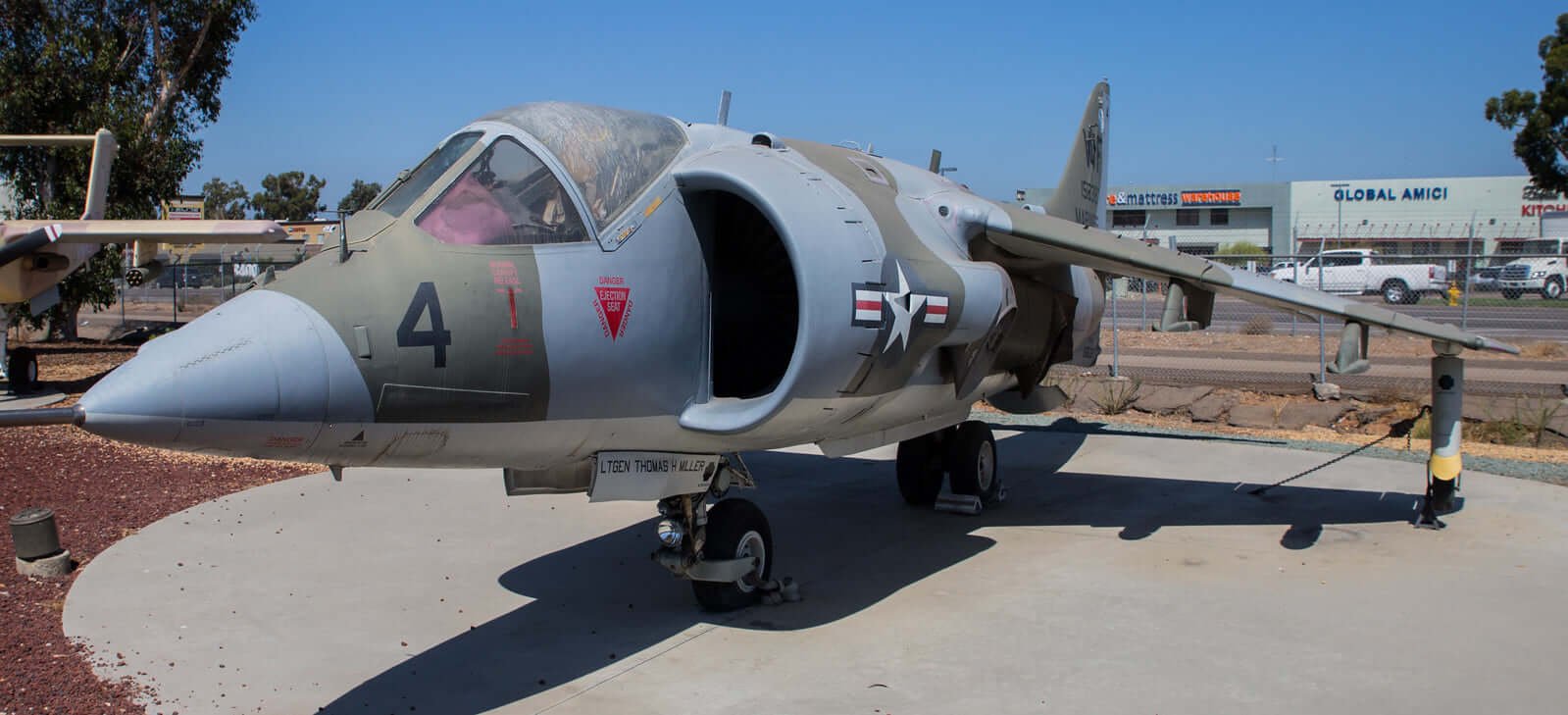History of the Harrier Military Jet
In the world of military aviation, innovation often takes flight in unexpected ways. One such remarkable innovation is the Harrier Jump Jet, a marvel of engineering that defies convention by vertically taking off and landing, revolutionizing tactical air operations. From its humble beginnings to its widespread adoption by various air forces around the globe, the Harrier has left an indelible mark on the history of aviation. Join us as we trace the fascinating journey of this iconic aircraft.
Birth of a Revolutionary Concept:
The story of the Harrier Jump Jet begins in the late 1950s when British aeronautical engineer Sir Sydney Camm conceptualized an aircraft capable of vertical or short takeoff and landing (V/STOL). This visionary idea sought to address the limitations of conventional runways and offer enhanced flexibility in deployment. With the support of the British Ministry of Defence, development efforts commenced, ultimately leading to the birth of what would become the Harrier.
Sir Sydney Camm was the designer of the Hawker and Harrier
Milestone Achievements:
The Harrier's journey from concept to reality was marked by numerous milestones. In 1967, the Hawker Siddeley Harrier, the first operational V/STOL aircraft, entered service with the Royal Air Force (RAF) and later with the United States Marine Corps (USMC) under the designation AV-8A Harrier. Its unique ability to operate from unprepared surfaces, such as fields or roads, made it a formidable asset in both combat and reconnaissance missions.
AV-8A Harrier - Forth Worth Aviation Muesum - United States
Combat Proven Performance:
The Harrier's combat debut came during the Falklands War in 1982 when RAF Harriers played a pivotal role in providing close air support and conducting ground-attack missions against Argentine forces. The aircraft's agility and versatility in operating from aircraft carriers and makeshift airfields showcased its battlefield prowess, earning it widespread acclaim.
Evolution and Advancements:
Over the years, the Harrier underwent several upgrades and variants to enhance its capabilities further. The development of the Harrier II series, including the AV-8B for the USMC and the GR.5/7/9 for the RAF, introduced improvements in avionics, weapons systems, and performance. Notably, the Harrier II featured a more powerful engine and advanced sensor suite, bolstering its effectiveness in modern warfare scenarios.
Global Impact and Legacy:
Beyond its service with British and American forces, the Harrier Jump Jet found its way into the inventories of several other nations, including Spain, Italy, and India. Its ability to operate in austere environments and provide critical air support made it a valuable asset for both NATO and allied nations. Moreover, the Harrier's influence transcended military boundaries, inspiring subsequent generations of V/STOL aircraft and shaping the future of aerial warfare.
A Spanish Navy AV-8 Harrier II
Conclusion:
The history of the Harrier Jump Jet is a testament to human ingenuity and innovation in the field of aviation. From its conception as a radical idea to its evolution into a battle-tested aircraft, the Harrier has left an enduring legacy in military aviation. Its ability to take off and land vertically has redefined the tactical landscape, offering unparalleled flexibility and agility in combat operations. As we reflect on its storied past, we acknowledge the Harrier's significant contributions to air power and its role in shaping the future of aerial warfare for generations to come.
At Centreline Content we help you write pieces that will appeal perfectly to your ideal customer profile. All pieces start at a minimum of 1500 words and we work with you to create the most personalised piece of content marketing.




